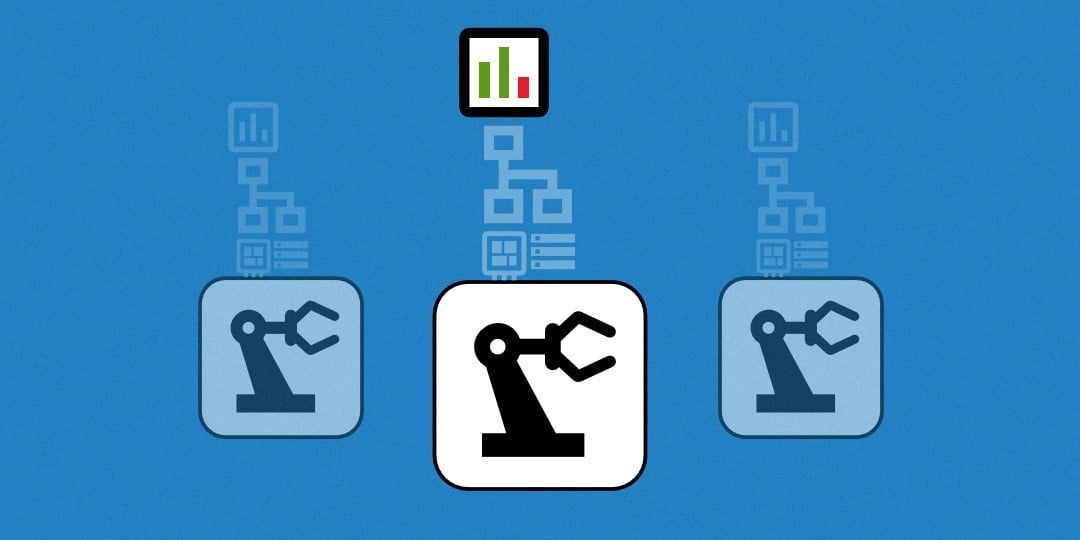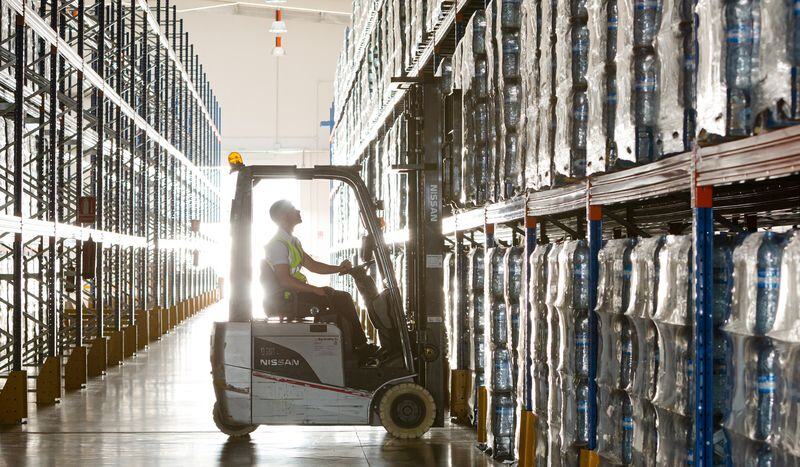The Benefits of Data Collection for Manufacturing Companies
Imagine yourself sitting at a table, attempting to complete a puzzle blindfolded. Without the use of your eyes, you find your hands scrambling around the table, hopelessly feeling edges and shoving pieces together at random. With the use of your eyes, the information needed to complete the task efficiently is clear, like where the colors match and where they don’t.
Lack of visibility into their processes and the status of their work is a problem many manufacturers and distributors face today, and one that often goes unnoticed. Without visibility into your process, you are unaware of or blindly guessing at what your constraints are and where your bottlenecks occur. The root cause of this problem is a lack of data collection, and it will yield an inefficient process, delayed shipments, and unhappy customers.
At Veryable, we work with data daily as we provide the platform for businesses to access an on-demand labor marketplace. Not only do we have to understand our own data to make the marketplace effective, but we have to understand the data our customers share with us so that we can advise them on how to get the most out of our solution. That’s why we want to share the importance of data for manufacturers.
In this article, you’ll learn why it’s important to track your data, what data you should be tracking, and what you can do with the data to benefit your business.
Benefits of Collecting Data for Manufacturing Companies
There are a few key things you can do when you track your data in a manufacturing environment:
- Gain visibility into your processes
- Enable continuous improvement
- Gain cost efficiencies
- Enable work standard development
- Increase customer satisfaction
We’ll explore each of these reasons in depth below.
Visibility Into Your Processes
Collecting your shop floor data will give you an invaluable insight into your process. This is the first step to opening the door for improvement projects. A 2017 survey by GEODIS reported that 77% of companies admitted to having either no visibility or a limited visibility into their process, and end-to-end visibility is the third-most prioritized objective for firms.
Having end-to-end visibility plays a pivotal role in profitability, flexibility, risk anticipation, partner relationships, customer satisfaction, and controlling your process.
Standard Work Enablement
Capturing data on work processes enables you to set work standards, which form the foundation for continuous improvement. Work cannot be standardized if you cannot establish and communicate the standard, both of which require data. And in order for continuous improvement projects to have any meaning, there must be standard work.
Standardized work allows for a baseline performance to be set and allows for all operators to explore ways to improve their process. As a result, continuous improvement projects can be implemented more quickly. This leads to seeing improved performance in shorter time periods. The workers on your shop floor likely know their process in-and-out. When you trust and encourage them to do more than just the daily routine, you’ll be surprised at what they will accomplish.
Continuous Improvement & Cost Efficiency
Data is an important enabler of continuous process improvement. If you do not have a baseline to measure against, you cannot know if you are improving. When gathered and monitored properly, your data can show you which changes are having the desired effect and which ones aren’t.
Continuous process improvement can yield:
- Higher product quality
- Reduced waste and cost
- Lower turnover
- Higher employee satisfaction and engagement
- Improved customer satisfaction
Continuous improvement isn’t just a series of buzzwords haphazardly spewed down from the upper management to the shop floor. It’s a mentality as much as it is a practice.
Customer Satisfaction
Finally, once you’ve improved your process and increased your throughput, you’ll have delighted customers who can trust that they’ll get quality products exactly when they need them.
As of 2017, ensuring on-time, in-full (OTIF) deliveries was the number one objective assigned to the supply chain, according to a GEODIS survey. OTIF deliveries remain a top priority to customers and suppliers, although they prove especially difficult given the current global supply chain constraints.
Having the capability to improve your customer satisfaction by ensuring OTIF to your customers all starts with data collection and analysis.
What Data Should I Track?
There is always more data to be recorded, from the basics that everyone has heard of to advanced supply chain analytic metrics. For now, here is a list of basic data points to begin your data collection and process improvement journey:
- Cycle time
- Downtime
- Lead time
- Peak/non-peak scheduled headcount and man-hours
- Volume (daily outbound units)
- Hiring costs
- Turnover
- Peak/non-peak overtime
- Work in progress (WIP) inventory
- Finished goods inventory
- Raw materials inventory
- Cost per unit
- Engineered standards
- Order fulfillment rate
How Do I Track My Data?
There are select metrics, like hiring costs, that can be tracked manually with low effort. A physical system of data collection, done through Excel or a similar software, is possible at a low level. It could be useful to achieve a baseline understanding of your process, but it is ultimately an outdated process that devotes too much time to manual collection.
An automated system for data collection, visualization, and analysis is the way to compete in the 21st century. Below are some examples of automated systems that can work together to give your company a fully encompassed view of your data.
Enterprise Resource Planning
Enterprise resource planning (ERP) is software used to manage daily operational tasks such as accounting, project management, risk management, and supply chain management.
Shop Floor Control
Shop floor control (SFC) is software that records, schedules, and reports on the progress of work done in a plant. This is used for inventory accounting, throughput accounting, and operator productivity on a shop floor. An SFC software is a type of ERP.
Warehouse Management System
A warehouse management system is a software designed to offer inventory visibility and overall manages the day-to-day operations of a warehouse. It optimizes inventory put-away and replenishment, as well as picking and shipping. A WMS can be used on its own or as a part of an ERP system.
What’s Next After Basic Data Collection?
Once you’re up-and-running with process management softwares, you’ll need to implement an application program interface (API) to ensure that your applications can “talk” to one another and access each other’s data. This will allow you to view information from separate systems in real time, further optimizing your data collection process.
At Veryable, our team draws from years of operations experience to advise what softwares would best serve you throughout your digital transformation journey. We aim to help manufacturers build a flexible capacity to respond in real time to demand, which can’t happen without the right data.
For more information, visit our homepage for Continuous Improvement, Operational Excellence, and Lean Professionals.
Previous Posts
Trump 2.0 Week 13 Recap: Discussing Ongoing Negotiations With Key Trade Partners, A Potential Deal With China On The Horizon, and More
The Future of Manufacturing and Logistics
Create a free business profile today to explore our platform.






